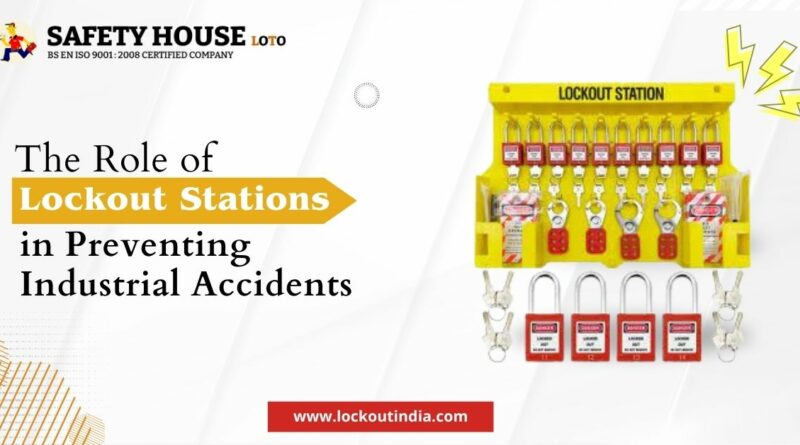The Role of Lockout Station in Preventing Industrial Accidents
Industrial environments are inherently hazardous, with heavy machinery, electrical systems, and complex operational workflows. One of the most effective measures to ensure worker safety and prevent industrial accidents is the use of a lockout station. These stations play a vital role in implementing Lockout/Tagout (LOTO) procedures, which are designed to protect workers from the unexpected energization or release of hazardous energy during equipment maintenance or servicing.
What is a Lockout Station?
A lockout station is a centralized storage unit that houses lockout/tagout devices and equipment. These stations are strategically placed within industrial facilities to ensure easy access to essential safety tools, such as padlocks, lockout tags, lockout hasps, and other LOTO devices. By providing a designated area for these tools, lockout stations help maintain organization, streamline safety protocols, and enhance compliance with safety regulations like OSHA’s Control of Hazardous Energy Standard (29 CFR 1910.147).
Preventing Industrial Accidents with Lockout Stations
- Eliminating Unauthorized Access Lockout stations ensure that only authorized personnel have access to lockout devices. This prevents accidental or unauthorized use of machinery during maintenance, reducing the risk of accidents caused by unexpected machine startups.
- Enhancing LOTO Compliance By providing a centralized and clearly labeled location for all LOTO tools, lockout stations encourage adherence to lockout/tagout procedures. This minimizes the chances of skipping crucial steps, ensuring a safer work environment.
- Streamlining Safety Protocols Lockout stations help workers quickly locate and deploy the necessary safety equipment, reducing downtime and ensuring that safety protocols are followed efficiently. This organized approach decreases the likelihood of human error, which is a major cause of industrial accidents.
- Encouraging a Safety Culture The presence of lockout stations promotes a culture of safety within the workplace. Workers are more likely to take safety protocols seriously when they see that the company has invested in proper safety equipment and training.
- Reducing Energy-Related Accidents Lockout stations play a key role in isolating hazardous energy sources. Whether dealing with electrical, mechanical, hydraulic, or pneumatic energy, the use of lockout devices ensures that machinery remains inoperable until maintenance or servicing is safely completed.
Key Components of a Lockout Station
A typical lockout station includes:
- Padlocks: To lock machinery in a safe or de-energized state.
- Lockout Tags: Clearly labeled tags that communicate the status of the locked-out equipment.
- Lockout Hasps: Allow multiple workers to apply their padlocks during group lockout procedures.
- Valve Lockouts and Circuit Breaker Lockouts: Specialized devices to secure specific energy sources.
Best Practices for Using Lockout Stations
- Strategic Placement: Ensure lockout stations are located near high-risk areas for quick access.
- Regular Inspections: Periodically inspect lockout stations to ensure all tools are present and in good condition.
- Training Programs: Provide comprehensive training for employees on proper LOTO procedures and the use of lockout stations.
- Clear Labeling: Clearly label all lockout devices to avoid confusion and ensure proper usage.
Conclusion
In industrial settings, safety must always be the top priority. Lockout stations are an indispensable component of any comprehensive safety program, providing the tools and organization necessary to implement effective lockout/tagout product procedures. By preventing the accidental energization of machinery and hazardous energy release, lockout stations play a crucial role in safeguarding workers and reducing the risk of industrial accidents. Investing in high-quality lockout stations is not just a regulatory requirement—it is a commitment to the well-being of employees and the overall efficiency of the workplace.




